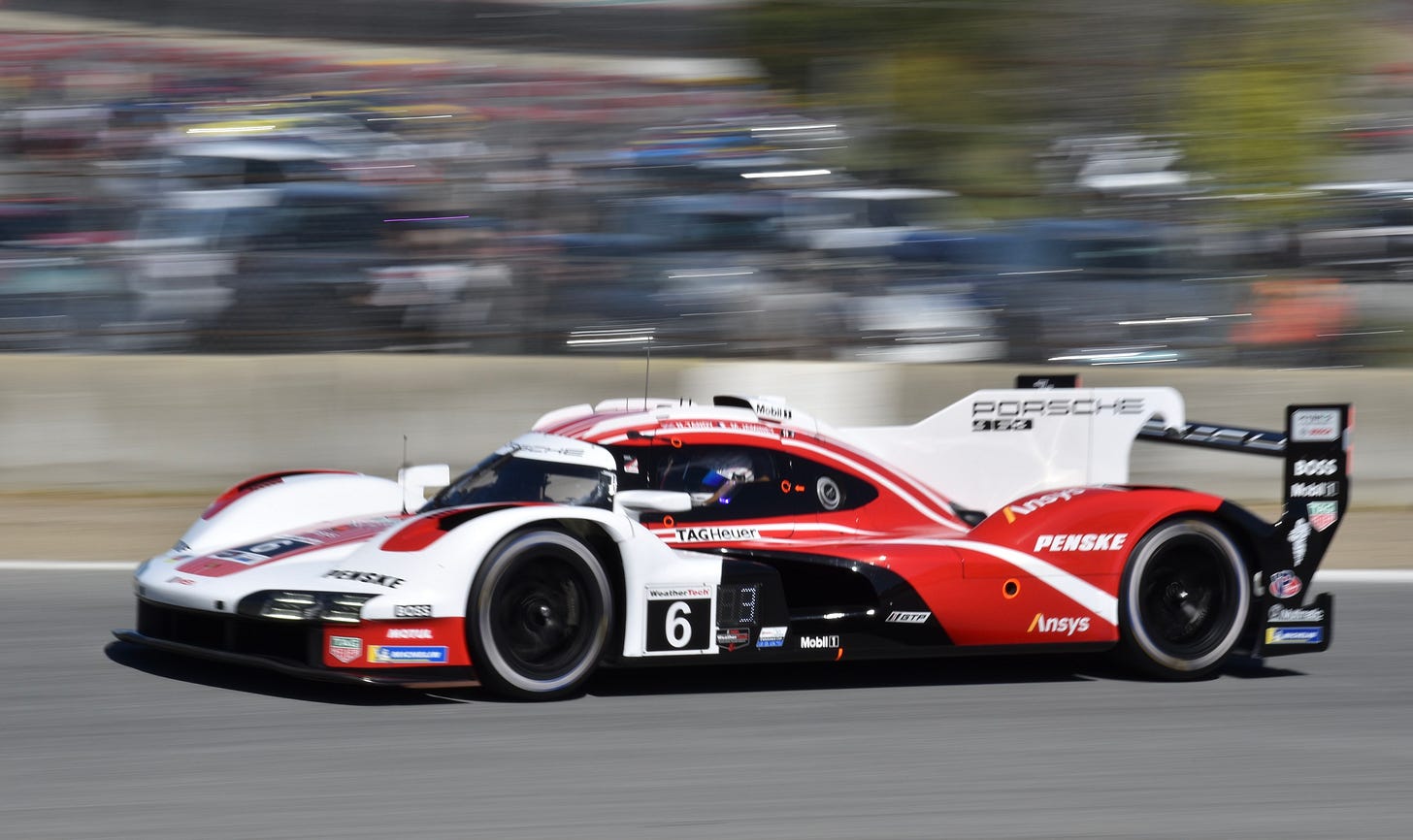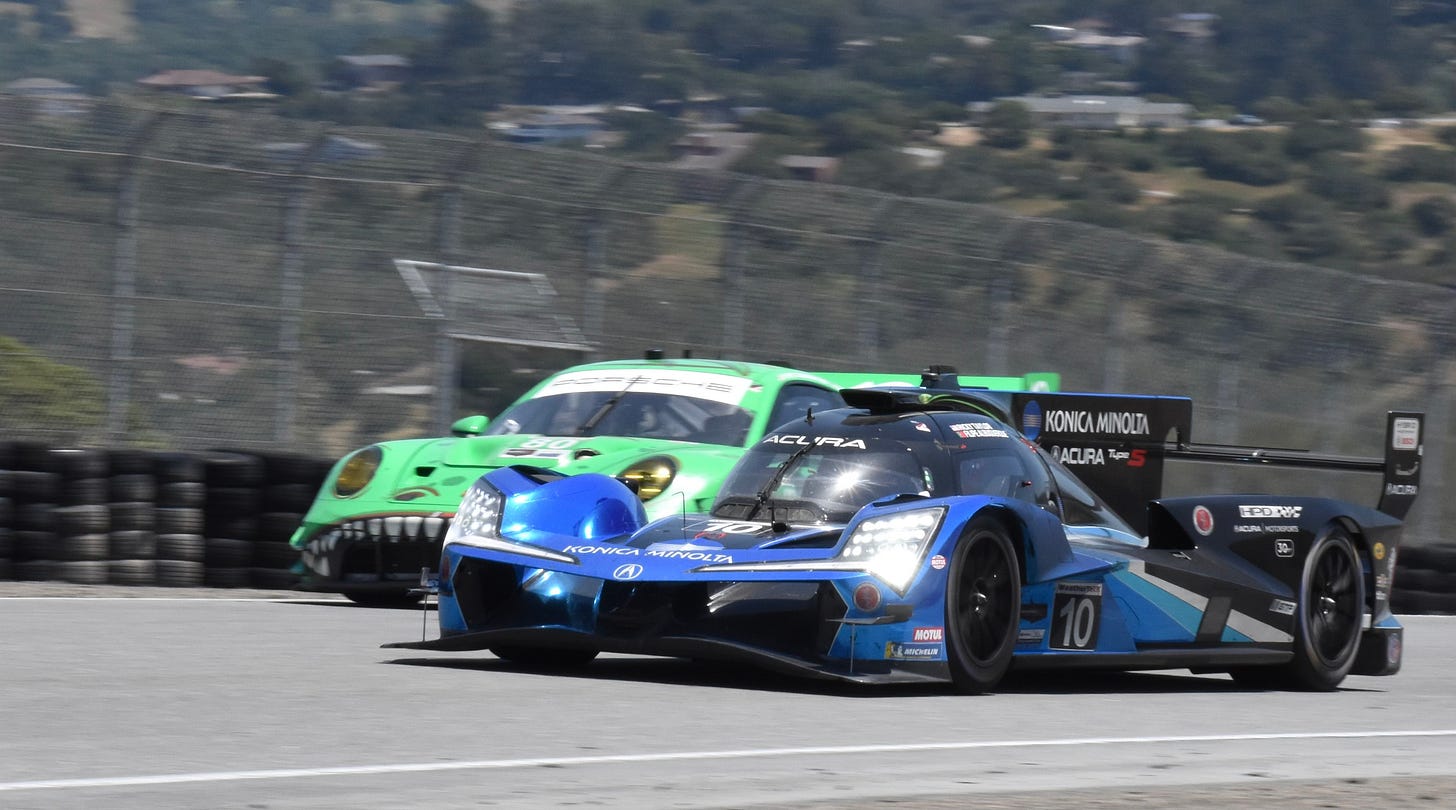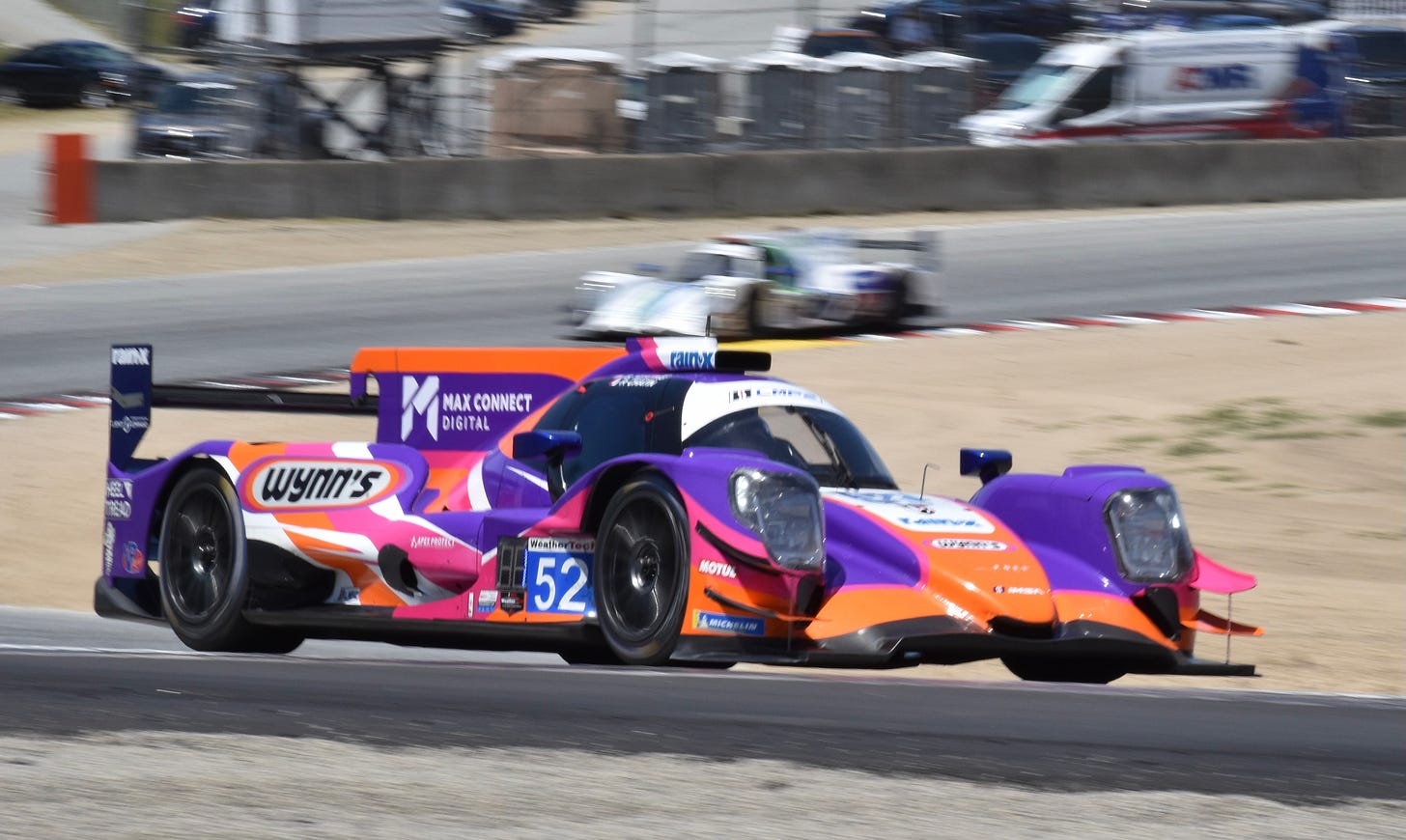This Week’s Le Mans 24: Race of the Century?
The story of how endurance racing has become the greatest show on Earth
By Todd Telford, words and photos
On paper, the 300,000 fans surrounding Circuit de la Sarthe near the small French town of Le Mans this weekend should witness the race of the century thus far. And that’s not hyperbole; in terms of quality, quantity, closeness of competition, historical pageantry, and eye-catching technology, nothing else adds up.
That’s because the World Endurance Championship has tailored its rules and categories to maximize the drama, with more heart-in-the-throat moments per hour than anything else under the sun.
The WEC has found that entertainment sweet spot, which is more than the balance between speed and closeness of competition. It’s also crafting rules that promote slight peaks and valleys of performance based on tire choices effecting pace through stints, and prompting strategies effecting the waning hours of the race.
While those dramas may be subtle, the main one, dozens of slower cars to slice between while dicing for overall positions, remains an inevitable source of thrills.
Since its inception, sports car endurance racing has included the constant challenge of multi-class racing where disaster is only one wrong flick of the wheel away. When cars battling for position in the top class come upon packs of production-based GT cars, it can be like trying to ski a steep slalom with the gates moving.
Make the wrong move and three or four seconds of hard-earned track position may be lost when the GT car becomes a pick, one that you’re trapped behind while one or more cars in your own scrum squeeze by.
While this dynamic is timeless in the sport, the frantic nature of these encounters is magnified by the sheer volume of top-class prototypes trying to snake through. There may be a pack of 15 or more cars lunging towards the GT pack, looking for any leverage they can fashion.
And this is the best it’s ever been. Five years ago the top class, LMP1, had only a half-dozen cars with factory Toyotas leading comfortably from independent teams. Now we’re in a second golden age of sports car racing, just now reaching its peak.
What will play out over 24 hours this weekend is the product of a collective vision between the international racing community, manufacturers, and rules makers of three different international sanctioning bodies, the FIA, ACO, and IMSA. And until about a decade ago, each was at odds with the others, fighting for dominance within endurance racing.
The Federation Internationale de l’Automobile is the sanctioning body for Formula 1 and the World Endurance Championship, of which Le Mans is round four of the season. WEC was always seen as second fiddle to F1, despite it’s top prototype class, LMP1, eventually reaching lap speeds close to its open-wheeled counterpart.
But that speed was part of the problem. LMP1 priced itself out of existence. In the states, the International Motor Sports Association had far better racing with its DPi class. While less sophisticated than the WEC cars, bigger fields of prototypes delivered more fun for fans.
So all three major players, WEC, IMSA, and Le Mans 24 sanctioning body Automobile Club de l’Ouest, decided to work together for a less expensive but still exhilarating top class. Rather than try to maximize available aerodynamic downforce, the choice was to lower downforce to mandate an easily attainable standard. The key here was to encourage manufacturers to include styling elements of their road cars into designs, something they could do without paying a performance penalty. So now Cadillac prototypes share the angular lines of their street cars. The nose of the BMW prototypes show the classic “kidney bean” look of the radiator grills of their heritage.
The same approach was taken on car performance. Engine output, combined in most cases with hybrid electric power, was to be capped at 670 hp.
With those aspects in mind, both the WEC cars and the IMSA prototypes on this continent were able to craft their own rules tailored to the path that they were already on, with the balancing of performance of each at the back end of the process.
The FIA created the LMH or Le Mans Hypercar class for WEC. Although most manufacturers built their chassis to incorporate hybrid power, the newest entrant, the beautiful and sonically glorious Aston Martin has a normally aspirated V-12 with no hybrid systems involved.
The LMH hybrids add power to the front wheels, giving them a moderate all-wheel drive effect. But that means a reduction of power at the rear wheels, because hybrid output is electronically offset by lower internal combustion power to stay below that 670 hp limit.
The same dynamic applies to the IMSA variation, dubbed LMDh or Le Mans Daytona hybrid. However no power goes to the front wheels; everything happens at the rear axle. Unlike in IndyCar, the hybrid does not present additional power to pass, although it can and will save fuel through its use.
Another aspect of the LMDh regulations is that all chassis must come from one of four manufacturers. Each engine manufacturer then had them built to their desired design, saving vast amounts of money up front. In a nod to IMSA’s past, the GT Prototype, or GTP name, has been resurrected with well-deserved fanfare. The glory days of the ‘80s and early ‘90s in sports car racing were wildly popular in North America.
The balancing of performance of the LMH and LMDh cars has been refined over two years of competition to level the playing field down to the major differences being the team operations and driver lineups. This has been done by adding weight or even slightly changing fuel capacity.
But when things are so equal, passing gets harder. Sanctioning bodies sometimes have to manufacturer limited advantages that some decry as against the spirt of the sport. Formula 1 has “DRS zones” where a slot gap is opened up between planes on the rear wings of trailing cars to cut drag on a predefined length of a straight to promote passing. IndyCar does that with both the hybrid and a “push to pass” button for a 60 hp boost.
The FIA does their differentiating through tires and a clever arrangement with Michelin, the top class tire provider. In previous years, all endurance tires were kept in heated blankets like F1 tires to be ready to perform as soon as the cars left the pits. But now all tire warmers are banned, and tires may take two or more laps to get up to proper working temperature. This can cost eight or more seconds at the start of a stint if all four tires are changed at the same time.
Add to this a limited amount of sets that can be used during a race, and entertaining twists can develop. While some teams double-stint a set of tires, others will change only left or right side tires so that the new ones have the old ones to lean on and minimize the performance loss at the beginning.
And if a caution period happens within a reasonable pit window, it’s easy to change all four and warm them up during caution laps to be on par or better than others.
One difference that alters strategies in WEC is that nothing can be done to a car while it is being refueled. Unlike within IMSA, all tire changes happen after the tank is full - or short-filled to gain a track position advantage.
If you watch the replays of the previous rounds on the WEC’s YouTube page, it really is fascinating to see how the yoyo effect on tire strategies plays out. The last race at Spa in Belgium showed how teams well back for most of the race rebound late when they have a tire advantage over teams who used them up to stay near the front.
Also, WEC has a fabulous “Full Access” recap of each race about ten days after each round with loads of behind the scenes peeks nearly as juicy as those from the Drive to Survive shows on Formula 1. Here’s the Spa version:
Now that you’re up to speed on why this year’s Le Mans is so compelling, it’s time to set the stage and introduce the players
The factory Ferrari team has won both Le Mans races in this new era with the gorgeous Ferrari 499P. The 2023 win was as an underdog, with Toyota expected to roll over all the new teams while they had a couple years of refinement behind them.
But last years win, and the sweeping of this year’s three races so far by the brand, should have the other seven factories in play wondering what tiny advantage has made the difference. Frankly, the answer is likely moot heading into Le Mans. So who will knock Ferrari off their perch?
More than a dozen cars have a good chance at doing that. Toyota, with their GR010 Hybrid, snuck past the Porsche Penske Motorsport team and won the 2024 teams title by just two points. And for Wednesday second practice, Toyota No. 8 was top of the time sheets. Their No 7 car was more than a second back.
Porsche Penske will have three 963s, Nos. 4, 5, and 6, all of which ran near the top Wednesday. The big surprise on the day was the No. 12 Cadillac Hertz Team Jota that was second quickest ahead of the privateer No. 83 AF Corse Ferrari.
Then on Thursday’s SuperPole session, the Jota Cadillacs locked out the front row of the grid, with the No. 12 driven by Alex Linn edging the No. 38 driven by Sebastian Bourdais by just .016 of a second over an 8.4-mile lap.
BMW M Team WRT put both of their Hypercars, Nos. 15 and 20, comfortably in the battle for SuperPole on Thursday. After lowly performances in the opening practice Wednesday, both the No. 93 Peugeot TotalEnergies and No. 009 Aston Martin The Heart of Racing team were able to squeeze into HyperPole eligibility set by those among the top 12 in Free Practice 2. The Alpine Endurance Team also made the grade with their No. 35 car.
Alpine is coming off their best ever finish in WEC’s new era, posting a podium at Spa. With the exception of Porsche Penske, all eight factories have two cars. Penske has to choose one car as the one not eligible for manufacturers points.
The privateer or customer entries score separate points with their own championship. Along with the AF Corse Ferrari, there’s the No. 99 Proton Competition Porsche and two Cadillacs brought over from the IMSA ranks. Wayne Taylor Racing has the No. 101 Cadillac WTR while the No. 311 Cadillac Whelen rounds out the US effort.
With 21 entrees in the top Hypercar class combining LMH and LMDh, the overall win is expected to be contested from flag to flag. The second fastest class, LMP2, is expected to be no less fierce. All 17 cars share identical Oreca chassis and Gibson engines with no hybrid assist. And this will be their only weekend in the international spotlight.
The LMP2 class doesn’t run in WEC this year; there’s no room for them in the other WEC pit lanes. Most run in the European Le Mans Series, one of several smaller stages without a World Championship on offer. This 24-hour race is their only chance for teams and sponsors to achieve lasting glory.
Despite being the slowest cars on track, the LMGT3 class that completes the field of 62 cars is expected to provide dramatic shifts in competition for yet another reason, the skill level of the drivers. Each car must have a Bronze level driver, the lowest international classification below Platinum, Gold, and Silver. Most Bronze drivers are of the “gentleman driver” mold, wealthy drivers that took to racing long after other careers had flourished.
Although they, too, have to gain experience and skill to be eligible for Le Mans, Bronze drivers represent a wild card in a team’s performance. Each Bronze driver must complete six hours behind the wheel to satisfy ACO regulations for class position eligibility. Most teams “front load” their Bronze driver’s time in the car to fulfill requirements closer to half-distance so that the pros can fight it out after sunrise.
The biggest stories in LMGT3 this year involve more factories performing at the sharp end of the pack. Lexus and Ford Mustang are now contenders to challenge Ferrari, Porsche, Aston Martin, and Corvette for top honors. Also, Mercedes AMG is allowed to join the fray after being unable to compete in WEC last season for logistical reasons.
The entire 24-hour race will be live on Max in the US, along with HyperPole qualifying on Thursday. Record them all, and spread them all out if you have to. The racing is so good, so compelling with ebbs and flows, that you might want to watch most of it over a period of days or even a week or two. Such is the bias against racing news that isn’t NASCAR, odds are you won’t find out who won until you’ve watched it all play out.
Then YOU’LL be the judge of whether this was the race of the century or not. The more time you invest in it, the more you might find the needle moving towards the max.








